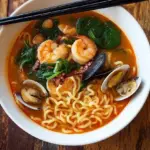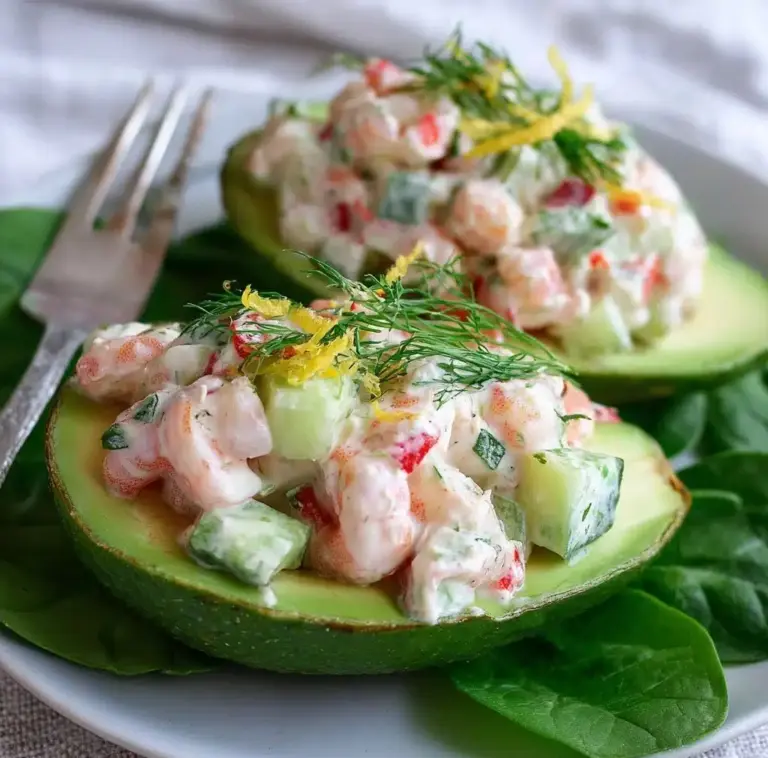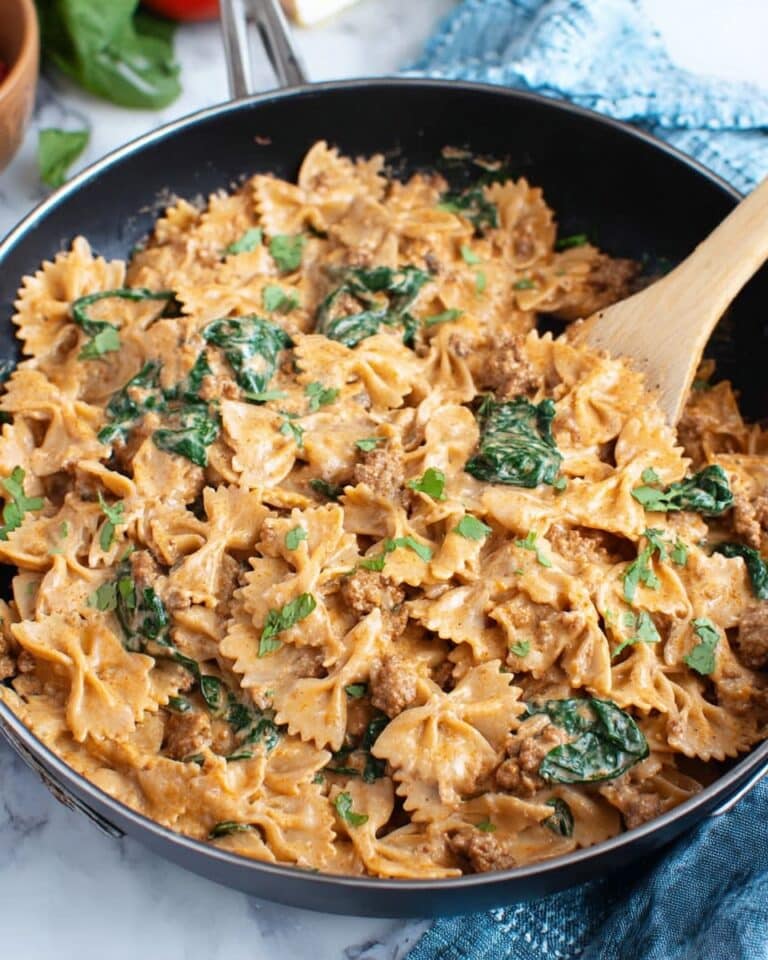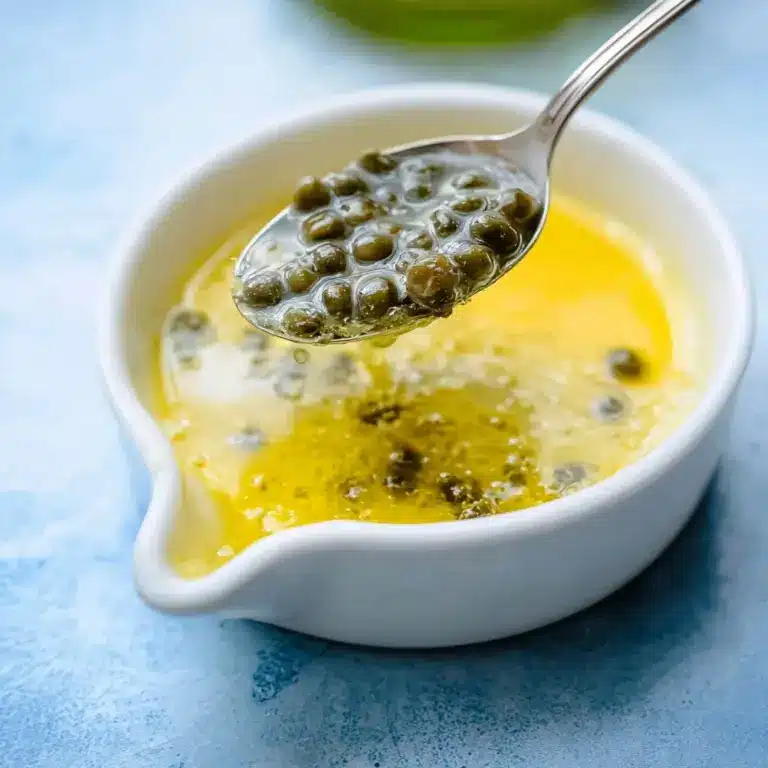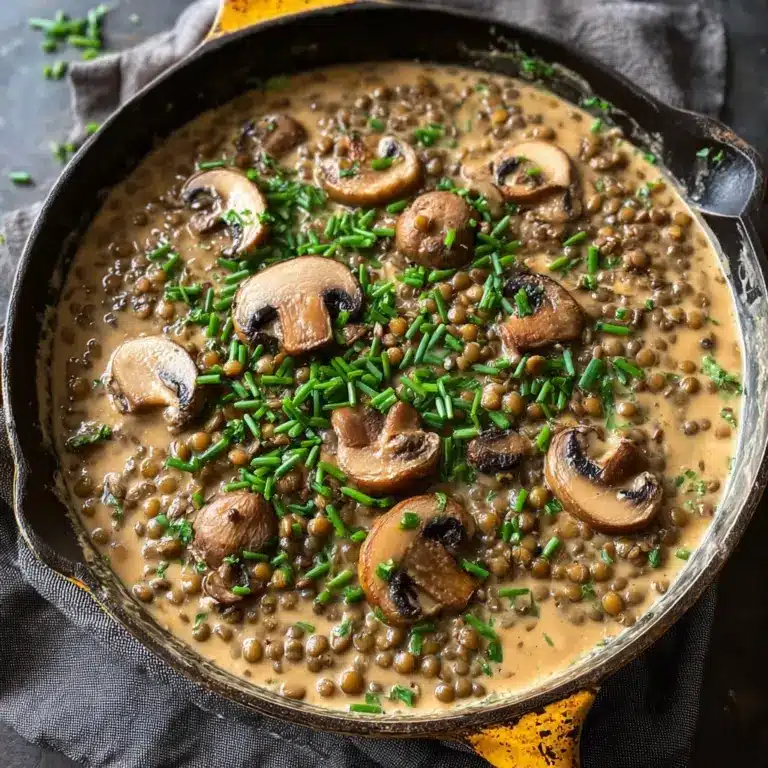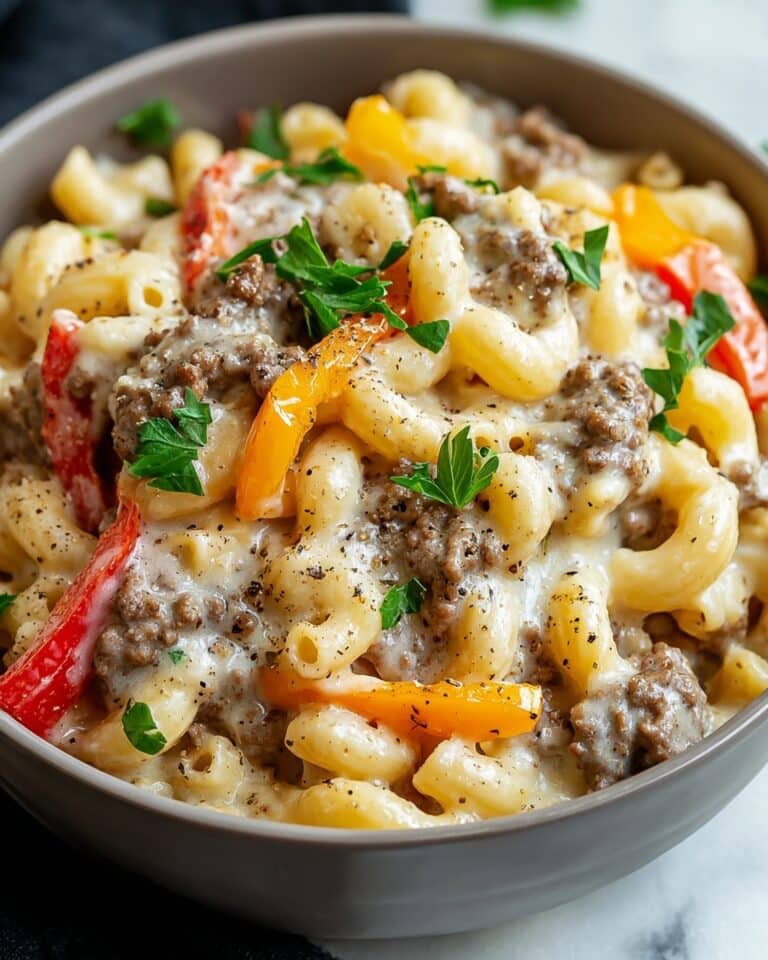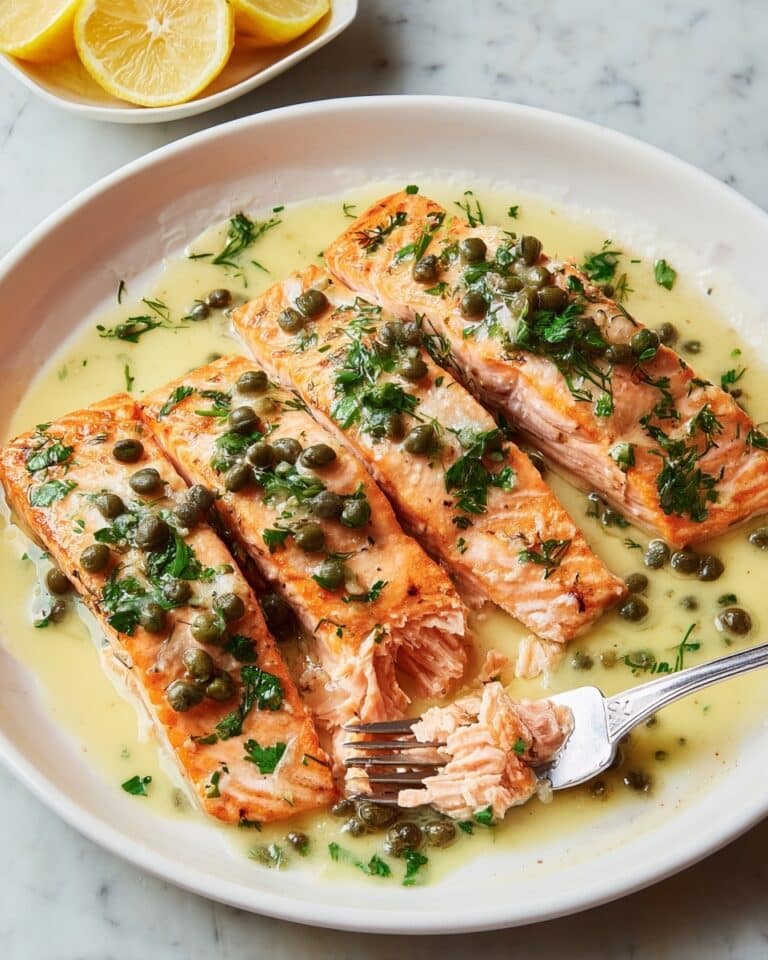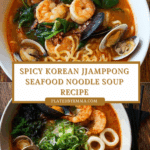Jjamppong (Korean Seafood Noodle Soup) Recipe
There is something truly special about a steaming bowl of Jjamppong (Korean Seafood Noodle Soup) that feels like a warm hug on a chilly day. This vibrant, spicy seafood noodle soup combines tender noodles, an array of fresh seafood, crisp vegetables, and a deeply flavorful broth with Korean chili paste and powder. Every spoonful bursts with bold flavors and textures that dance on your palate, warming you from the inside out and giving you a perfect taste of Korea’s beloved comfort food. Whether you’re new to Korean cuisine or a longtime fan, this recipe captures the essence of Jjamppong beautifully, making it a must-try for your next cozy meal.
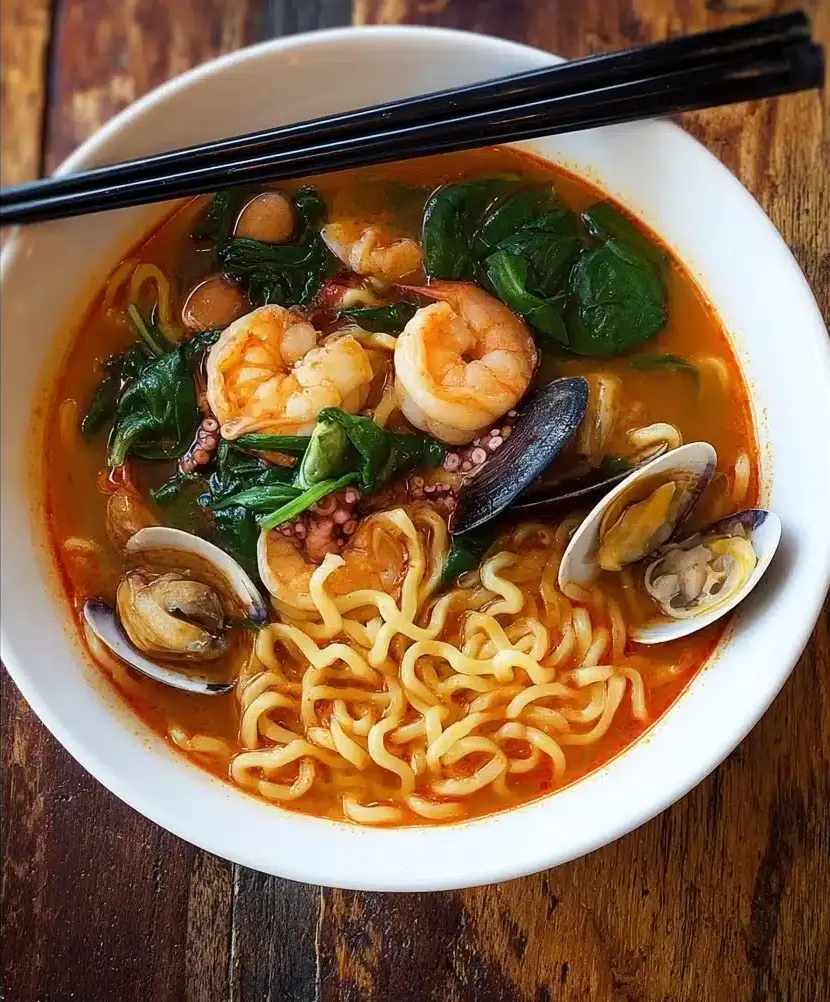
Ingredients You’ll Need
The magic of Jjamppong (Korean Seafood Noodle Soup) lies in its simple yet essential ingredients. Each component plays a key role in building layers of flavor, from the briny sweetness of fresh seafood to the fiery kick of gochujang and gochugaru that colors the broth a vibrant red, while the fresh vegetables add a welcome crunch and balance.
- 8 oz. Korean fresh noodles: These noodles have a perfect chewy texture that holds up well in the spicy broth.
- 2 tablespoons cooking oil: Helps stir-fry the aromatics and seafood evenly without sticking.
- 3 cloves garlic (minced): Adds a fragrant, robust base flavor to the soup.
- 1/2 small onion (peeled and cut into pieces): Sweats down to add subtle sweetness and depth.
- 8 oz. medium-sized shrimp (10-12): Provides a succulent seafood bite with a slightly sweet flavor.
- 12 oz. Manila clams: Brings a fresh ocean essence and natural brininess.
- 4 oz. squid (cut into rings): Adds tender chewiness that complements the noodles.
- 4 oz. bay scallops (or sea scallops): Offers a buttery sweetness that enriches the broth.
- 4 tablespoons gochujang (Korean chili paste): The star ingredient that provides heat, umami, and bold color.
- 1 tablespoon gochugaru (Korean chili powder): Adds a smoky, layered spiciness without overwhelming the palate.
- 4 cups chicken broth (or bone broth): The hearty liquid base that carries all the flavors together.
- 4 oz. napa cabbage (cut into pieces): Adds a crisp, slightly sweet vegetable bite that softens in the broth.
- 4 oz. bok choy: Contributes leafy green freshness and a pleasant crunch.
- 1-2 tablespoons soy sauce (or to taste): Brings umami depth and balances the spicy elements.
- Salt (to taste): Enhances all the natural flavors without overpowering.
- 2 stalks scallions (cut into strips): Adds bright, oniony notes and a fresh finish when stirred in at the end.
How to Make Jjamppong (Korean Seafood Noodle Soup)
Step 1: Cook the Noodles
Begin by preparing the Korean fresh noodles according to package instructions, aiming for an al dente texture. This means the noodles should have a firm bite in the center. Avoid cooking them completely at this stage because they will continue cooking in the soup later. Once cooked, drain them well and set aside. This step is crucial to keep the noodles from turning mushy once added to the broth.
Step 2: Sauté Aromatics and Seafood
Heat the cooking oil over high heat in a large pot until shimmering. Add the minced garlic and pieces of onion, stirring quickly until fragrant and softened. This creates an aromatic base that will infuse the soup. Next, add the shrimp, Manila clams, squid rings, and scallops to the pot. Stir everything together so the seafood begins to cook evenly and absorbs the garlic-onion flavors.
Step 3: Add Spices and Broth
Now comes the exciting part—mix in the gochujang and gochugaru. These Korean chili ingredients bring that vibrant red heat and complexity to the dish. Give it a thorough stir so the spices coat the seafood wonderfully. Then pour in the chicken broth or bone broth and add the napa cabbage and bok choy. Increase the heat to bring the soup to a quick, lively boil, which helps the flavors meld perfectly and cooks the veggies just right.
Step 4: Season and Combine Noodles
Taste the broth and add soy sauce and salt according to your preference—this will balance the spice and provide a savory depth. Add the par-cooked noodles to the bubbling soup and let them cook for about 30 seconds until they soften fully. Stir in the scallion strips for a fresh, mild onion flavor, then immediately turn off the heat. Your Jjamppong is ready to enjoy!
How to Serve Jjamppong (Korean Seafood Noodle Soup)
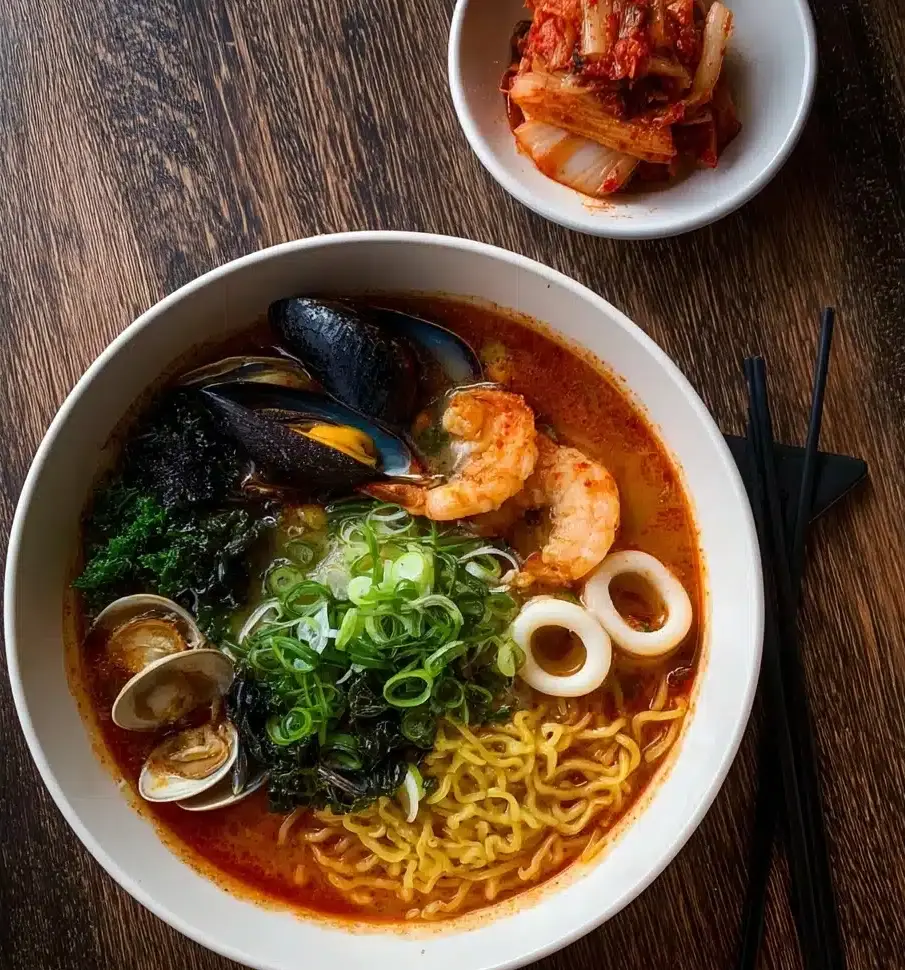
Garnishes
While the soup is delicious on its own, adding a sprinkle of chopped fresh scallions or a few cilantro leaves can brighten the flavors beautifully. Some like to add a dash of toasted sesame oil or a squeeze of lime for added aroma and tang that elevates each bite. These simple garnishes bring freshness and visual appeal that make your bowl feel special.
Side Dishes
Jjamppong pairs excellently with traditional Korean side dishes like crunchy kimchi, pickled radish, or a light cucumber salad. These sides provide crispy, tangy contrasts that refresh the palate between spoonfuls of spicy, hearty soup. Also, steamed rice can be a great complementary staple for those who want a more filling meal alongside the noodles.
Creative Ways to Present
For a fun twist, serve Jjamppong in rustic, deep bowls with wide rims so you can gather the noodles and seafood easily with chopsticks and spoon. Sprinkling some toasted sesame seeds or crushed roasted seaweed on top adds an extra layer of texture and flavor. Hosting a Korean dinner party? Offer toppings like sliced chili peppers, garlic chips, or fresh herbs on the side so everyone can customize their bowls.
Make Ahead and Storage
Storing Leftovers
If you have any leftovers, store the soup in an airtight container in the refrigerator for up to 2 days. Keep the noodles separate if possible to prevent them from over-softening and becoming mushy. When ready to eat, reheat the broth and seafood gently before adding fresh noodles or reheating the stored ones briefly.
Freezing
Freezing Jjamppong is possible but not ideal due to the delicate seafood and noodles. If you decide to freeze it, separate the broth and seafood from the noodles, and place them in freezer-safe containers. The broth and seafood can freeze for up to 1 month. Thaw overnight in the refrigerator and reheat gently. Prepare fresh noodles during reheating for the best texture.
Reheating
To reheat, warm the broth and seafood slowly over low to medium heat, stirring occasionally to prevent sticking. Add cooked noodles just before serving and heat for about 30 seconds to avoid overcooking. Fresh scallions sprinkled in right before serving bring back the soup’s vibrant finish.
FAQs
Can I use dried noodles instead of fresh Korean noodles?
Yes, dried noodles can work but you might need to adjust the cooking time since dried noodles often require longer boiling. Fresh noodles have a chewier texture that holds up better in the soup.
What seafood can I substitute if I can’t find Manila clams or bay scallops?
Other clams like littlenecks or cockles work well. For scallops, you can substitute with additional shrimp or firm white fish chunks for a similar texture and taste.
How spicy is Jjamppong normally?
Jjamppong has a moderate to high level of spiciness due to gochujang and gochugaru, but you can adjust the amounts based on your personal heat tolerance by using less chili paste or powder.
Is this soup gluten-free?
It can be made gluten-free by using gluten-free soy sauce and ensuring that the noodles and gochujang are certified gluten-free. Always check ingredient labels to be certain.
Can I make Jjamppong vegetarian or vegan?
A vegetarian version is possible by omitting the seafood and using vegetable broth instead of chicken broth. To keep the depth of flavor, add mushrooms and tofu, and use a vegetarian-friendly gochujang.
Final Thoughts
Jjamppong (Korean Seafood Noodle Soup) is more than just a meal—it’s an experience that brings together the freshness of the sea, the kick of Korean spices, and the comfort of a warm bowl of noodles. I encourage you to dive into this recipe with enthusiasm, knowing that every step brings you closer to a vibrant, satisfying dish you’ll want to make again and again. It’s a colorful celebration of flavors that’s sure to brighten any day!
PrintJjamppong (Korean Seafood Noodle Soup) Recipe
Jjamppong is a vibrant Korean seafood noodle soup featuring a spicy, flavorful broth loaded with shrimp, clams, squid, scallops, and fresh vegetables. This comforting dish combines chewy Korean fresh noodles with a hearty, aromatic broth infused with gochujang and gochugaru, delivering a perfect balance of heat and umami. Perfect for seafood lovers seeking a deliciously warming meal with bold Korean flavors.
- Prep Time: 15 minutes
- Cook Time: 15 minutes
- Total Time: 30 minutes
- Yield: 4 servings 1x
- Category: Soup
- Method: Boiling, Stir-frying
- Cuisine: Korean
- Diet: Halal
Ingredients
Noodles and Broth
- 8 oz. (230g) Korean fresh noodles
- 4 cups chicken broth (or bone broth)
- 1–2 tablespoons soy sauce (or to taste)
- salt (to taste)
Seafood
- 8 oz. (230g) medium-sized shrimp (10–12 pieces)
- 12 oz. (350g) Manila clams
- 4 oz. (125g) squid (cut into rings)
- 4 oz. (125g) bay scallops (or sea scallops)
Vegetables and Aromatics
- 3 cloves garlic (minced)
- 1/2 small onion (peeled and cut into pieces)
- 4 oz. (125g) napa cabbage (cut into pieces)
- 4 oz. (125g) bok choy
- 2 stalks scallions (cut into strips)
Spices and Oils
- 2 tablespoons cooking oil
- 4 tablespoons gochujang (Korean chili paste)
- 1 tablespoon gochugaru (Korean chili powder)
Instructions
- Cook the noodles: Prepare the Korean fresh noodles by boiling them according to the package instructions, cooking them until al dente, which means they still have a firm bite in the center. Once cooked, drain the noodles and set them aside without overcooking.
- Prepare the seafood and aromatics: Heat the cooking oil in a large pot over high heat. Add the minced garlic and onions, stir-frying them until they release their aroma and are slightly softened. Then add the shrimp, clams, squid rings, and scallops to the pot, stirring to combine thoroughly with the aromatics and oil.
- Add spices and broth: Stir in the gochujang chili paste and gochugaru chili powder with the seafood, coating everything evenly. Next, pour in the chicken or bone broth, followed by the napa cabbage and bok choy. Bring the mixture to a quick boil to allow the flavors to meld and the vegetables to cook slightly.
- Season and finish: Add soy sauce and salt to taste for seasoning. Add the cooked noodles to the boiling soup and cook for about 30 seconds to allow them to warm through and absorb the flavors. Stir in the sliced scallions to add freshness.
- Serve immediately: Turn off the heat and ladle the hot, spicy seafood noodle soup into bowls. Serve it immediately while piping hot to enjoy the full flavors and texture contrasts.
Notes
- Use fresh seafood for the best flavor—if unavailable, frozen seafood can be substituted after thawing.
- Adjust the spiciness by reducing or increasing the amount of gochujang and gochugaru.
- Be careful not to overcook the noodles; slightly undercooked noodles are ideal as they will finish cooking in the soup.
- Chicken broth can be replaced with vegetable broth to make this dish pescatarian-friendly.
- Add additional vegetables like mushrooms or carrots for extra texture and nutrition.
- To make it gluten-free, ensure the noodles and soy sauce used are certified gluten-free.
Nutrition
- Serving Size: 1 bowl (about 400g)
- Calories: 380 kcal
- Sugar: 4 g
- Sodium: 900 mg
- Fat: 12 g
- Saturated Fat: 2.5 g
- Unsaturated Fat: 8 g
- Trans Fat: 0 g
- Carbohydrates: 45 g
- Fiber: 4 g
- Protein: 25 g
- Cholesterol: 85 mg
Keywords: Jjamppong, Korean seafood noodle soup, spicy seafood soup, Korean noodles, seafood recipes, spicy soup

